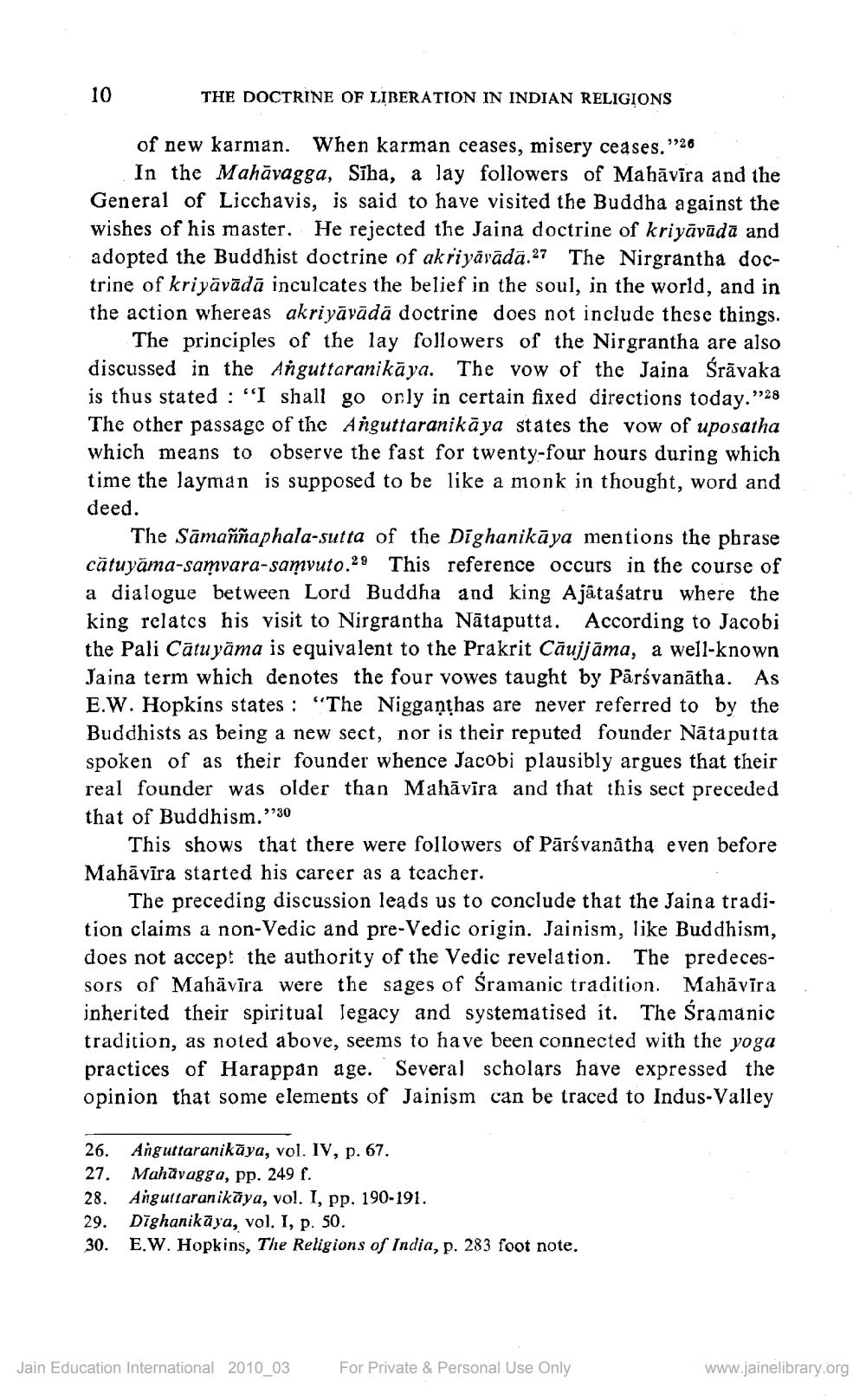________________
10
THE DOCTRINE OF LIBERATION IN INDIAN RELIGIONS
of new karmian. When karman ceases, misery ceases. "26
In the Mahāvagga, Sība, a lay followers of Mahāvīra and the General of Licchavis, is said to have visited the Buddha against the wishes of his master. He rejected the Jaina doctrine of kriyāyāda and adopted the Buddhist doctrine of akriyavādā.27 The Nirgrantha doctrine of kriyāvādā inculcates the belief in the soul, in the world, and in the action whereas akriyāvādā doctrine does not include these things.
The principles of the lay followers of the Nirgrantha are also discussed in the Anguttaranikāya. The vow of the Jaina Śrāvaka is thus stated : "I shall go orly in certain fixed directions today."28 The other passage of the Anguttaranikāya states the vow of uposatha which means to observe the fast for twenty-four hours during which time the layman is supposed to be like a monk in thought, word and deed.
The Sāmaññaphala-sutta of the Dighanikāya mentions the phrase cātuyāma-samvara-samvuto.29 This reference occurs in the course of a dialogue between Lord Buddha and king Ajätaśatru where the king relates his visit to Nirgrantha Nātaputta. According to Jacobi the Pali Cātu yāma is equivalent to the Prakrit Cāujjāma, a well-known Jaina term which denotes the four vowes taught by Pārsvanātha. As E.W. Hopkins states: "The Nigganthas are never referred to by the Buddhists as being a new sect, nor is their reputed founder Nāta putta spoken of as their founder whence Jacobi plausibly argues that their real founder was older than Mahāvīra and that this sect preceded that of Buddhism."'30
This shows that there were followers of Pārsvanátha even before Mahāvīra started his career as a teacher.
The preceding discussion leads us to conclude that the Jaina tradition claims a non-Vedic and pre-Vedic origin. Jainism, like Buddhism, does not accept the authority of the Vedic revelation. The predecessors of Mahāvīra were the sages of Sramanic tradition. Mahāvīra inherited their spiritual legacy and systematised it. The Sramanic tradition, as noted above, seems to have been connected with the yoga practices of Harappan age. Several scholars have expressed the opinion that some elements of Jainism can be traced to Indus-Valley
26. Anguttaranikāya, vol. 1V, p. 67. 27. Mahāvagga, pp. 249 f. 28. Anguftaran ikāya, vol. I, pp. 190-191. 29. Dīghanikāya, vol. I, p. 50. 30. E.W. Hopkins, The Religions of India, p. 283 foot note.
Jain Education International 2010_03
For Private & Personal Use Only
www.jainelibrary.org




